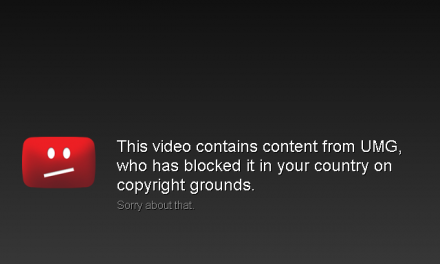 When users create sponsored content
When users create sponsored content
Georg Enrique Martens, Universität Hamburg
Upholding Content Creators to European Standards
As conventional broadcasting is losing its grip on consumers, especially children, digital audiovisual media services such as Netflix, YouTube and Vimeo take its place. With this shift in media consumption habits, the EU tackled the need for broader regulation with the Audiovisual Media Service Directive 2010/13/EU (AVMSD). This regulatory directive clearly prohibits surreptitious advertising and only allows product placement under certain conditions. Parallel to the AVMSD, most countries have regulatory directives laying out conditions to allow product placement in audiovisual media.
Regulation of Product Placement in its Actual Form
Product placement has been legally defined in said directive. According to Article 1 (1) m AVSMD, it is “any form of audiovisual commercial communication consisting of the inclusion of or reference to a product, a service or the trade mark thereof so that it is featured within a programme, in return for payment or for similar consideration”. The unauthorized use of product placement becomes surreptitious advertising. Conditions for the use of product placement within a programme have been laid out in Article 11 (3) of the directive.
While this regulatory work may seem to encompass new media platforms, it pertains solely to video-on-demand platform services of editorial nature. Further on, these platforms fall under lighter regulation than conventional broadcasting services because of the two-tier system laid out in the directive. In contrast to conventional broadcasting, the consumers can directly select the content they want to watch; the regulatory approach is therefore different.[1] It remains problematic that the directive in its current form doesn’t comprise user generated content nor video-sharing-platforms (VSPs) that primarily host this kind of content due to their lack of editorial nature, nor does it include content delivered over the internet from outside of the EU.
Services such as Netflix and Amazon Prime need to be careful with product placement in its content but content creators[2] on YouTube may not.
The Legal Grey Zone of Product Placement
This leaves product placement on YouTube unregulated on an EU wide level. Member countries such as Germany have tried tackling this problem by holding German creators up to German standards and laws pertaining to product placement (Rundfunkstaatsvertrag / § 7 (7) RStV) and threatening with fees, should the creator not work within the legal boundaries. This is, to avoid surreptitious advertising by clearly differentiating between content and advertisement. While these proceedings are complicated enough, any user-generated content created outside of Germany is still left outside of its jurisdiction. Further on, other member states may have their own legal boundaries as to when product placement in user generated content is permissible. This non-uniformity just further drives the legal grey zone that exists here. Regulation pertaining to the internet should happen on as wide a scale as possible.
European Fundamental Rights
The AVMS Directive is, according to paragraph 16 of the preambles, as it stands in full compliance with the European fundamental rights, in particular with Article 11 thereof. Any extension of the directive must be done maintaining and ensuring this freedom of expression and information.
The inclusion of prohibition of surreptitious advertising in user-generated-content on video-sharing-platforms is, in my opinion, not atypical to the already prohibited actions in the directive. It is a necessary update to the emerging importance of this type of media and its prevalent consumption. Therefore, its inclusion doesn’t impact the compliance of the AVMS Directive with the Charter of Fundamental Rights of the European Union.
Digital Advertising and User-Generated-Content
When talking about advertisement on user-generated content on VSP platforms like YouTube, it is often not clear how substantial this market is. The top 13 content creators on YouTube earned a combined total of $ 54.5 million (€ 44.6 million)[3] last year through sponsored videos and advertising. Digital advertising has been steadily growing globally at a rate of 14%. It is estimated to reach from $194 billion in 2016 to $ 372 billion by the year 2021. Content advertising, strategic marketing technique of creating and distributing content to attract and acquire a clearly defined audience,[4] makes up a sizable chunk of this, growing from 6.6% in 2016 to 13.7% of the digital ad market by 2021. By itself it is growing at a rate of 32%, from $12.8 billion last year expecting to reach $50 billion in 2021.[5]
User generated content on YouTube is especially attractive to advertisers. In a recent study 37 of 57 surveyed YouTube creators had used some form of product placement in their videos.[6] Product placement by creators could be particularly dangerous due to the amateur nature of their work. Many don’t create a clear distinction between advertising and actual content. Further on YouTube is very popular for children and younger teenagers, with an interest in gaming or beauty related content. They are particularly susceptible to predatory advertising.
An Updated Audiovisual Media Services Directive
On 25 April 2017, the European Parliament’s Committee on Culture and Education voted to amend the proposal for an updated EU Audiovisual Media Services Directive.
Among proposals to deregulate commercial communications and overall liberalize the audiovisual market, is the extension of the material scope towards video-sharing platforms. The new proposal specifies it should cover ‘those services the principal purpose of which is the provision of programmes to inform, entertain or educate.’ This definition should include video sharing providers, i.e. YouTube. According to the briefing, the commission additionally “considers that a substantial share of the content stored on VSPs is not under the editorial responsibility of the VSP provider, but, at the same time it acknowledges that the intervention of these providers is not merely the result of automatic means or algorithms.”[7] This convoluted wording seems intentionally vague. In what ways user-generated-content would be regulated under the changed proposal is left unclear.
This statement however leads directly to the question of what responsibility these video-sharing platforms carry for the user generated content they host. Media platforms having a responsibility for the content they host has been affirmed by the EU in various directives and as of latest by the European Commission’s Communication on Tackling Illegal Content Online.[8] The main goal of the EU holding media platforms accountable for the hosted content is to introduce a culture of self-regulation. This strategy has shown continuous positive outcomes. For example, reports from June 2017 indicated an overall increase of removal of notified illegal content from 28 percent to 59 percent over a six months period.[9] Following this approach, video-sharing platforms should be incentivized to have their hosted content adhere to European standards when pertaining to product placement.
Proposal on the Regulatory Approach
Any regulatory work should be directed at the large video-sharing platforms operating within the EU themselves. Deterring content creators from utilizing surreptitious advertising can only be achieved through cooperation with these video-sharing platforms. Europe is a great and important market for them and it is especially beneficial having one set of rules to follow instead of dozens of individual nations ones, the drive to cooperate would therefore exist. Moreover, the best assessors to determine strategies to keep content creators from utilizing illegal surreptitious advertising are these video-sharing platforms themselves.
Pertaining to YouTube, creators underlie strict guidelines placed on them, specifically for product placement and advertisements within the videos.[10] YouTube gives the option for creators to mark the use of paid product placement and have it be notified to the viewers. There’s also an option to demonetize a video if it is deemed necessary. Content creators tend to be able to profit from the advertisements shown by YouTube before their hosted content. Keeping content creators from profiting on videos that utilize illegal advertising methods could be one approach to combat it. As of now users on YouTube may only face disciplinary or economic reprimands with the platform should they breach these guidelines but face no actual legal consequences. Following the idea of self-regulation, the approach should perhaps be to assign these platforms the responsibility of appropriately combating surreptitious advertising with internal guidelines and warnings that conform to EU standards, as well as ensuring consequent legal actions, such as warning letters and fines, towards the content creators by the member nations implementing the directive.
Conclusion
As the legislation of the amended AVMSD is still in process, the extension of the material scope towards VSP platforms should perhaps take on a more concrete form. The updated directive should explicitly include user-generated-content. This multi-million-dollar market cannot further exist in a legal grey zone. Accordingly, the commission has many more regulatory challenges to face, not even to mention content flowing in from outside of the EU. That being so, there should at least be an approach to properly regulate the content from within our borders.
[1] General Principles, Graduated Regulation, https://ec.europa.eu/digital-single-market/en/general-principles.
[2] A content creator is a user of a platform actively creating and publishing content and sharing it with an audience.
[3] https://www.forbes.com/pictures/gjdm45jih/youtube-millionaires/#53743c58629d.
[4] http://contentmarketinginstitute.com/2015/08/native-advertising-content-marketing/.
[5] https://polar.me/blog/closer-look-50-billion-content-advertising-ecosystem/.
[6] Gerhardt, Product Placement on YouTube, http://journals.sagepub.com/doi/abs/10.1177/1354856517736977.
[7] Katsarova, Briefing on EU Legislation, http://www.europarl.europa.eu/RegData/etudes/BRIE/2016/583859/EPRS_BRI%282016%29583859_EN.pdf.
[8] https://ec.europa.eu/digital-single-market/en/news/communication-tackling-illegal-content-online-towards-en hanced-responsibility-online-platforms.
[9] COM (2017) 555, pg. 4; http://europa.eu/rapid/press-release_IP-17-1471_en.htm.
[10] https://support.google.com/youtube/answer/188570?topic=30084&ctx=topic&hl=en.











